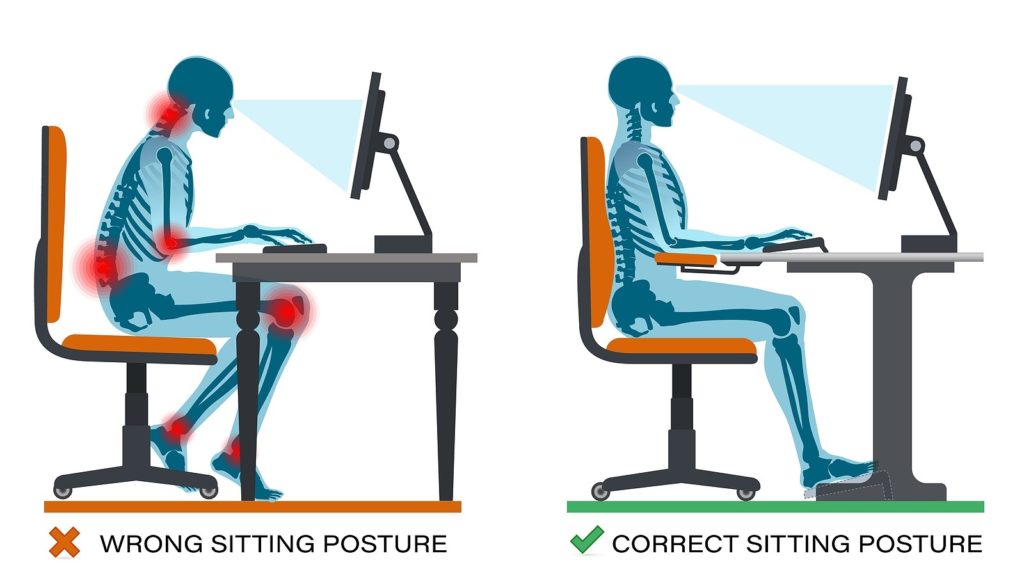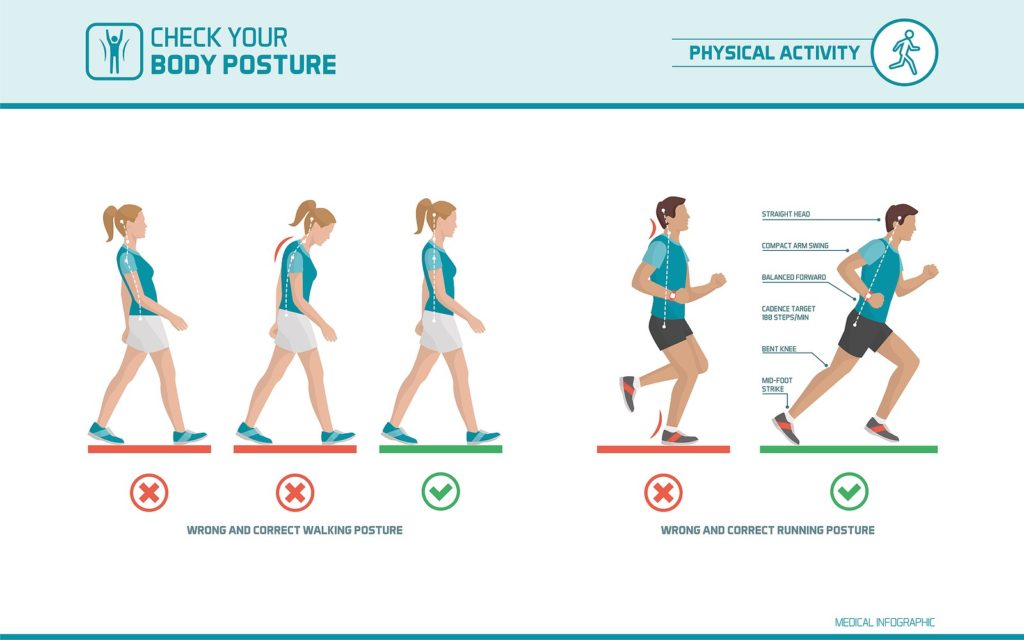Home / Blog / The Importance of Posture for Seniors
The Importance of Posture for Seniors
September 15, 2021

Change is a constant and immutable fact of life. As with so many things as we age, more candles on the birthday cake mean more changes to our bodies.
Some of these changes are part of the normal aging process, but some — like bad posture — can be the result of years of bad habits. So why is good posture so important as we get older?
Good posture is important for seniors for a number of reasons:
- Bad posture can cause back, neck and shoulder pain.
- It can make us look older and more feeble.
- It interferes with our balance, increasing our fall risk.
- And possibly the biggest reason why posture is so important for seniors: Bad posture can cause us to lose flexibility and strength, which can lead to injury.
We don’t want any of that — what we want is posture exercises for seniors that can help us maintain our health and minimize problems.
What good posture looks like
Stop what you’re doing right now and evaluate how you’re sitting. Are you hunched over your phone or laptop while you’re reading this? If you’re standing, are you peering at your device with your neck and head down? Next time you’re out walking, are you staring more at the ground in front of you with your shoulders slumped forward?
All these are examples of bad posture. When sitting, you essentially want your legs and spine to be at a 90 degree angle, with your head and neck in vertical alignment with your spine, and your legs forming the horizontal angle:

When you’re standing at a counter or a standing desk, your head, neck and spine should be a straight vertical line. If your arms are on your desk, they should be at a 90-degree angle with your body. If you’re standing and you have something in your hand, like your phone, raise the object closer to your eye level so that your neck and head stay in alignment with your spine:

And when you’re walking (hopefully you’re not walking and looking at your phone), keep your head up in vertical alignment with your neck, and your back straight:

Good posture involves having your ear, shoulder, hip, knee and ankle aligned vertically from the side. You might need to train your body to maintain good posture so that the least amount of strain is placed on the joints, muscles and ligaments of your body.
Fortunately, there are exercises for that.
Benefits of good posture, and how to keep it
Having good posture isn’t all about etiquette. (Remember all the times your teachers told you to stand up straight?) It’s also about the role good posture plays in keeping your back and spine healthy and strong. Here are some benefits of keeping everything in alignment:
- Fewer headaches: Slumping your shoulders and dropping your head can cause unnecessary tension that contributes to headaches. Straighten up, and you may have fewer headaches overall.
- Better balance: This can help reduce the risk of potentially debilitating falls.
- Back relief: Good posture uses the muscles that properly support your spine. Forward head, tilted hips and overly curved spines all put stress on muscles in ways they’re not designed to endure. Over time, this stress will cause you pain in your back.
- Better digestion: Good posture helps align your organs, which means less squeeze on the stomach, liver and intestines. Food and digestive juices flow better through your body when your body isn’t compressed. A slouched posture, however, can inhibit your gastrointestinal activity, making you more vulnerable to things like constipation and Gastroesophageal reflux disease (GERD).
Now that we know the importance of good posture in seniors, let’s look at some posture exercises for seniors.
Start with the child’s pose.
Do this common yoga pose twice daily, morning and night. It’ll help lengthen and stretch your spine.
How to do it:
- Start on your hands and knees, with your knees as far as shoulder-width apart and your big toes touching each other.
- Crawl forward on your hands and extend your arms straight out toward the front of the mat. You can also drape your arms on the floor alongside your body.
- Slowly start to drop your hips back to rest on your heels.
- Rest your forehead on the floor.
- Breathe 5–10 deep breaths.
Do the cat-cow.
It’s called the cat-cow because you’ll alternately resemble the arch of a cat and the swaybacked look of a cow. (Use your imagination and you’ll see it.)
How to do it:
- Start on your hands and knees. Your arms should be straight, elbows locked, with your palms on the ground. Keep your fingers spread against the ground for increased stability and keep your head looking up.
- Begin the Cat phase: As you exhale, tuck your tailbone under using your abdominal muscles to push your spine toward the ceiling, making the shape of a Halloween cat with its back arched. Lengthen your neck and allow your head to reach toward your chest so that your ears come down by the biceps.
- As you breathe out, “swoop and scoop” the pelvis into the Cow position so that your belly is dropped toward the floor. Lift your chin and chest and gaze up toward the ceiling. Draw your shoulders away from your ears.
Try the downward-facing dog.
Also a common yoga position, this one’s useful for opening up the anterior chest wall and stretching shoulders that are so often rounded by sitting at a desk too long.
How to do it:
- Start out on all fours.
- Tuck your toes and lift your hips and buttocks high, toward the ceiling. You’ll basically be trying to form an inverted V shape with your body while your palms and feet are flat on the ground.
- Reach your heels back toward the mat without allowing them to plank on the ground. Drop your head so that your neck is long.
- As you stay here, make sure that your wrist creases stay parallel to the front edge of the mat. To alleviate the pressure on your wrists, press into the knuckles of your forefinger and thumbs.
- Breathe in and out as you make each movement.
Mix in some high planks.
These sound odd until you try them — all you’re doing is an uneven pushup so that your spine is diagonal from the floor.
How to do it:
- Start in a pushup position, with your arms straight. Press your heels toward the ground so that the backs of your legs are getting stretched, too.
- With your elbows locked and your arms straight underneath your shoulders, create space between your shoulders and ears so that there’s a slight stretch. Make sure your chest isn’t sinking, and keep your shoulder blades back.
- Do 3–5 rounds of 10 breaths, counting your breaths.
This isn’t a stretch to do: Learn more about Franciscan Ministries communities.
Each of our communities offers a remarkable lifestyle full of services and amenities — including lots of wellness opportunities to keep you in the best health. To find out about all the services we offer, simply contact us.



